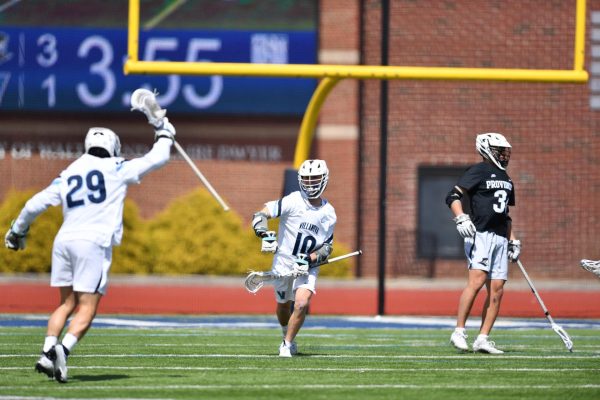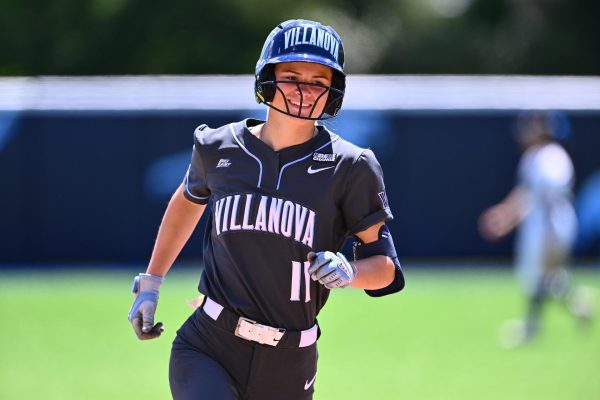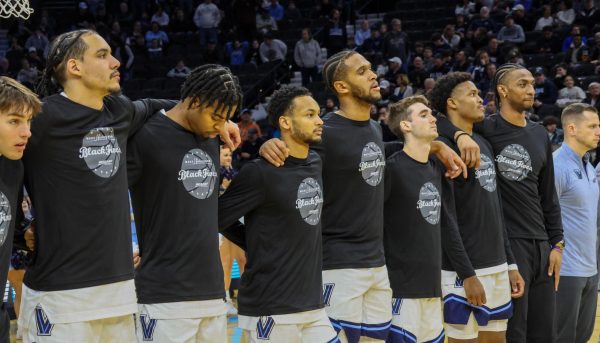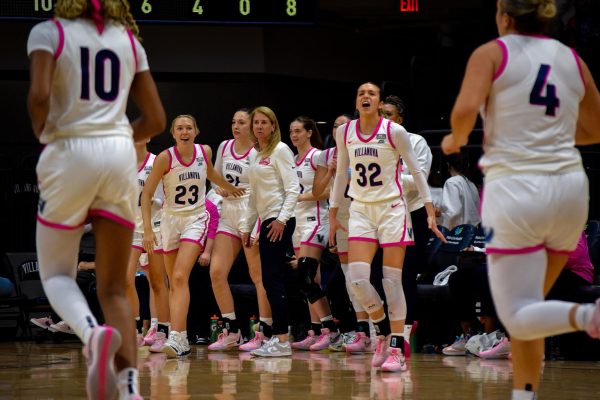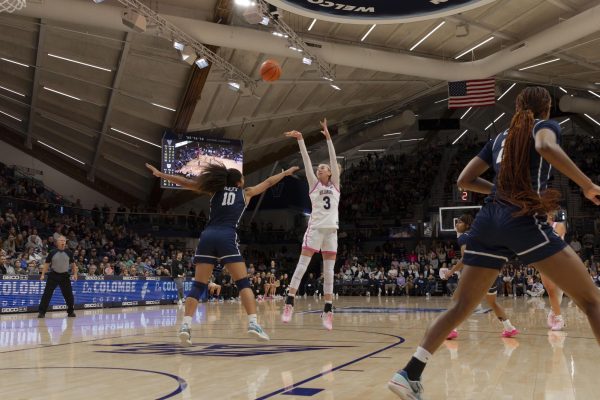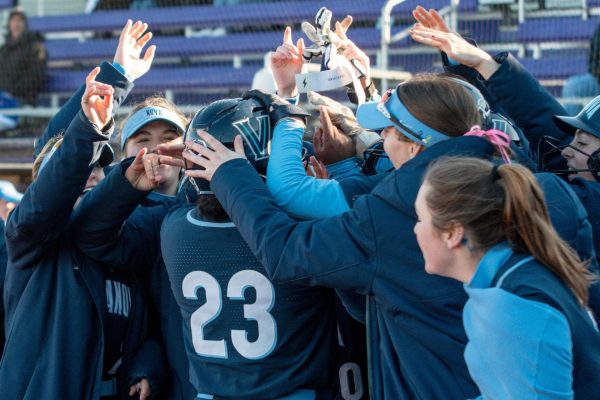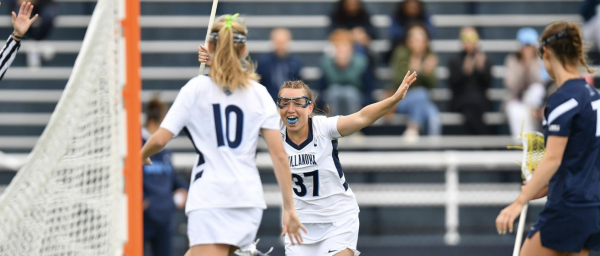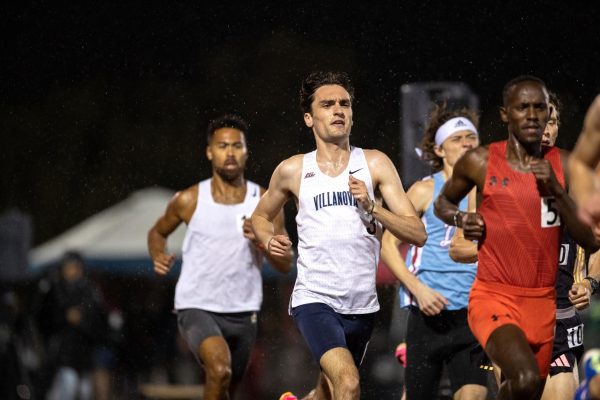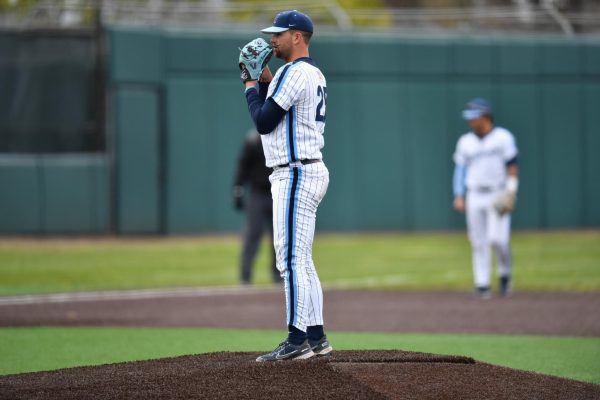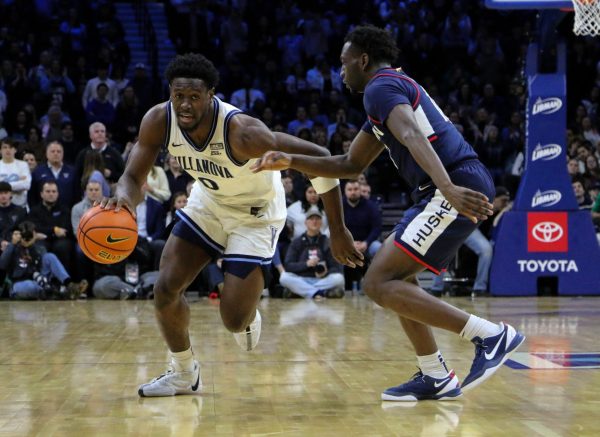Throwing Down with Judo: Behind the Judogi
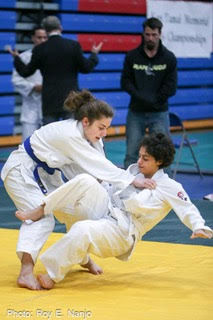
Throwing Down with Judo: Behind the Judogi
October 1, 2019
I didn’t know anything about judo. I thought it was people in bathrobes using pure strength to get the best of their opponents. So, when I went to the Villanova Judo Club’s practice last Thursday and saw Lauren Dentato, a senior judo club member who is five foot nothing (in her own words), throw Connor Rustemeyer, a Villanova alumnus almost twice her size, I had to ask how her she did it.
“You’re using your opponent’s momentum against them. Judo isn’t about strength, it’s about efficiency of energy,” she explained to me. “It’s magic,” Connor added.
Judo, on paper, is not like any other club sport. It’s an Olympic sport. One gets medals for beating an opponent. Participants are featured on the Villanova Judo Club Facebook if they do well in a tournament.
“But we do ‘Jodan Judo’ – ‘big’ Judo, that’s sport, martial art, philosophy, and physical education (in the ‘Eastern’ sense of mind and body vs. the “Western” sense of “gym class”). Judo is a way of life,” Sensei Roy Nanjo, the club’s leader, said.
“He’s been doing judo since before my parents were born,” Spencer Gold, a junior, informed me on the van ride to practice.
Villanova’s Sensei has been studying judo for more than 50 years (some of that time under two of the greatest Japanese American masters: John Osako and Jim Takemori) and helped start the Villanova Judo Club 14 years ago.
Before practice started, Sensei elaborated on the Venn Diagram of Judo, the combination of sport, martial art, philosophy, and physical education.
“It takes most people three years to really ‘get’ judo,” Sensei said, as the club members got dressed in their gi, a heavy and stiff white robe, and assembled what seemed like a square mile of mats. “But those girls over there,” he said while pointing out three women (Rosie Norman, Christina Larow, and Chiara Rego) to me. “We call them the Sophomore Women, they’re only in their second year and they get judo.” I then asked what “getting” judo looks like. “I can’t explain it,” Sensei replied. “It’s like trying to explain the color blue to someone who’s never seen it before.”
Unlike Western sports, judo has rules of etiquette (reishiki). Before stepping on the mat, one must bow with her feet together and her arms at her side. Before randori (fighting/sparring), you bow to your opponent. To start practice, everyone knelt in a line and meditated for a few minutes to remove themselves from the busy life of a college student. Then, the stretching and quizzing started. The white belts were put up front with Sensei and quizzed about their judo knowledge: when was judo officially recognized as a sport, the names of some of the moves they were learning, etc. Then, the white belts were paired with a colored belt to practice throws. I was informed the white belts haven’t been taught ukemi, which is how to fall properly so they don’t hurt themselves after being thrown. The Villanova Judo Club takes every caution to make sure the white belts feel welcomed into the club and that there is a safe learning environment for the white belts, most of whom have never done judo before.
I got to learn some throws (strictly for journalistic purposes) and some basics of the philosophy of judo. Lauren Dentato was kind enough to let me throw her around a bit. The first one I learned was O Soto Gari (major outside reaping throw), where one would sweep an opponent’s leg and throw them down. I also learned Hadaka Jime (naked choke), which is where you choke someone under their gi. While I was learning the moves, Dentato, Rustemeyer, Kira Schlobohm and Kira’s fiancé Joe More explained two basic principles of judo. The first is strength of three, or the maximum efficient use of energy (Seiryoku Zenyo). If one has strength of three, and an opponent has a strength of eight, one would use her opponent’s strength against them, creating a favorable strength of 11. The second principle is Jita Kyoei, mutual benefit and welfare. In every randori, no matter who wins or loses, there is a mutual benefit. Even if one breaks one’s opponent’s arm, there’s a mutual benefit. To understand this principle is to “get” judo, to really understand. More and Schlobohm also explained Kagami Biraki (shattering of the mirror), which is a process at the beginning of the year ,where you reflect on yourself and areas where you need to improve and have improved upon since last year. Kagami Biraki can help you improve judo as a martial art, but it’s also about improving yourself as a person (part of the philosophy of judo).
From the first minute I entered the van, it was evident the club members have a great dynamic. In the van, changing before practice, people were talking and laughing. Dinners before practice and Spit dinners after practice happen every time they get together. Everyone on the team has their judo friends and their other friends. For many of the people at the practice, being a part of Villanova Judo Club doesn’t end after graduation. Charles Wahlberg, a Villanova alumnus, works in New York City and comes two and a half hours to practice two or three times a week.
Rustemeyer, a brown belt, turned down jobs in New York so he could stay close to judo club. Schlobohm and More, Villanova alumni as well as judo coaches, drive an hour each way to come to practice.
Judo is a big commitment, it’s a two-hour practice three times a week. It’s a three-year commitment to just try to “get” judo. There must be something that keeps people coming back, even from two states away. You just have to “get” judo to understand why there are so many alumni willing to come back every week.


